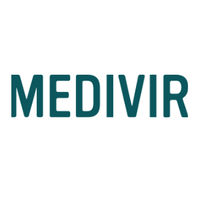预约演示
更新于:2025-12-04
Alovudine
阿洛夫定
更新于:2025-12-04
概要
基本信息
原研机构 |
权益机构- |
最高研发阶段临床前 |
首次获批日期- |
最高研发阶段(中国)- |
特殊审评- |
登录后查看时间轴
结构/序列
分子式C10H13FN2O4 |
InChIKeyUXCAQJAQSWSNPQ-XLPZGREQSA-N |
CAS号25526-93-6 |
关联
22
项与 阿洛夫定 相关的临床试验NCT03633955
Multi-institutional Prospective Pilot Study of Radiology Evaluation of Acute Leukemia Infiltration analyZed by Experimental Imaging
This is a prospective pilot study, the primary aim of which is to determine whether the presence of 18F FLT imaging signal uptake abnormalities correlate with clinically validated evidence of hematopoietic malignant disease (e.g. MRD, molecular, flow or histology) after immunotherapy and other treatments.
开始日期2023-01-19 |
申办/合作机构 |
NCT01410630
FLT-PET/CT vs FDG-PET/CT for Therapy Monitoring of Diffuse Large B-cell Lymphoma
A research study of a new method of visualizing internal organs called 18F-FLT PET/CT that yields better tracking of cancer treatment progress. PET/CT stands for positron emission tomography with low dose computed tomography and has been used for many years. 18F-FLT PET/CT uses a new tracer, fluorothymidine, which is taken up by cells that are actively proliferating or dividing such as cancer cells. We hope to learn whether this tracer is superior to the conventional tracer for monitoring treatment of diffuse large B-cell lymphoma (DLBCL).
开始日期2017-09-07 |
申办/合作机构 |
JPRN-jRCTs051180147
FLT-PET/MRI imaging for the evaluation of early response to immune checkpoint inhibitors - FLT-PET/MRI imaging for the immune checkpoint inhibitors
开始日期2017-06-28 |
申办/合作机构- |
100 项与 阿洛夫定 相关的临床结果
登录后查看更多信息
100 项与 阿洛夫定 相关的转化医学
登录后查看更多信息
100 项与 阿洛夫定 相关的专利(医药)
登录后查看更多信息
527
项与 阿洛夫定 相关的文献(医药)2025-11-01·ECOTOXICOLOGY AND ENVIRONMENTAL SAFETY
Inhalation bioaccessibility of polycyclic aromatic hydrocarbons from reference combustion-derived particles: Methodological aspects and toxicological impact on bronchial epithelial cells
Article
作者: Votier, Edwige ; Rogez-Florent, Tiphaine ; Monteil, Christelle ; Boutamba Mbina, Albana ; Bouzar, Clémence ; Yon, Jérôme
Combustion-derived particles are a significant concern due to their nanometric sizes and complex chemical compositions, which can negatively impact health. These particles contain polycyclic aromatic hydrocarbons (PAH) and their oxygenated derivatives (OPAH), which can dissolve in biological lung fluids. As a result, they form complex mixtures whose toxicity is often poorly studied. Therefore, evaluating inhalation bioaccessibility is crucial for accurately assessing the health risks associated with these particles. We determined the inhalation bioaccessibility fractions (IBAF) of 16 PAH and 5 OPAH from particles generated under controlled conditions. Several critical parameters were evaluated, including simulated lung fluids (SLF), extraction times, and solid-to-liquid (S/L) ratios. Our results indicated that eight compounds - NAP, ACY, FLU, 9-FLUO, PHE, ANT, FLT, PYR - were systematically extracted by the different SLF, namely Gamble's solution (GS), artificial lysosomal fluid (ALF), modified GS (MGS), and simulated epithelial lung fluid (SELF) after 24 h of extraction time with an S/L ratio of 1/2000. The evaluation of the toxicological response, based on cytotoxicity and the AhR-dependent pathway, demonstrated variability in the toxicological profiles, depending on the extraction conditions used. Notably, the extraction condition yielding a biological response equivalent to that assessed with the total particulate fraction was the use of MGS as the extraction fluid under our experimental conditions. From a toxicological perspective, these approaches appear relevant for assessing the toxicity mechanisms of PAH mixtures, closely mimicking the in vivo conditions found in the human respiratory tract. This study outlined that understanding whether the bioaccessible fraction of particulate-bound PAHs is a reliable predictor of toxicity is central to advancing inhalation risk assessment.
2025-09-01·MICROCHIMICA ACTA
Ultra-sensitive electrochemical sensor based on MOF-derived Ni@carbon nanoframework and MWCNTs for the detection of flutamide in environmental water samples
Article
作者: Fei, Junjie ; Xie, Yixi ; Chen, Yinzhi ; Li, Zhen ; Wang, Yilin ; Li, Xinyi ; Liu, Zhifang ; Zhao, Pengcheng ; Li, Jiejun
Ni@carbon nanoframework-multi-walled carbon nanotubes (Ni@CNF-CNTs) nanomaterials were synthesized through the carbonization of flower-like nickel metal organic framework (Ni-MOF) and multi-walled carbon nanotubes (MWCNTs). Subsequently, a high-performance flutamide (FLT) - an anti-androgen drug - electrochemical sensor was constructed using the nanomaterials. Both Ni@carbon nanoframework (Ni@CNF) and MWCNTs have adsorption capacity for FLT. Importantly, the excellent electrical conductivity of MWCNTs, combined with the multiple metal reactive sites of Ni@CNF, enables the synthesized materials to effectively detect the environmental pollutant FLT. The Ni@CNF-CNTs/glassy carbon electrode (Ni@CNF-CNTs/GCE) sensor demonstrates the capability to detect FLT concentrations ranging from 0.1 to 4.9 μM, with a limit of detection (LOD) of 23.2 nM (S/N = 3). The manufactured sensor is characterized by remarkable stability and selectivity, with recoveries ranging from 96.7% to 101.6% in actual samples. Furthermore, the detection results were validated using ultraviolet-visible spectroscopy (UV-Vis), indicating its applicability for detecting FLT in real environmental water samples. This work presents a novel approach to developing a sensitive, eco-friendly, and cost-effective FLT detection technique, demonstrating the effectiveness of electrochemical sensors.
2025-09-01·DNA REPAIR
Proofreading exonuclease activities of Polδ and Polε differentially contribute to the removal of chain-terminating nucleoside analogs
Article
作者: Nishizawa, Eri ; Hirota, Kouji ; Tsuda, Masataka ; Kawasumi, Ryotaro ; Ohkubo, Hiromori
Chain-terminating nucleoside analogs (CTNAs) are incorporated into genome during replication by replicative polymerase delta (Polδ) and epsilon (Polε), then inhibit DNA synthesis by preventing subsequent polymerization. The proofreading exonuclease activity of Polε removes the incorporated CTNAs, thereby contributing to cellular tolerance to these drugs. However, the contribution of Polδ's proofreading exonuclease activity has not been clarified, nor has the relationship between Polδ and Polε been well understood. We here show that Polδ's exonuclease activity contributes to the cellular tolerance to CTNAs, with the role of Polδ and Polε exonucleases differing depending on the kinds of CTNAs. We tested the sensitivity of POLD1exo-/+ cells to a CTNA, Ara-C, and found that expression of the exonuclease deficient Polδ sensitizes cells to Ara-C. Furthermore, the exonuclease deficient Polδ reduced cell viability upon Ara-C to the same extent in both Polε exonuclease-proficient and -deficient cells, indicating that these two polymerases independently contribute to cellular tolerance to Ara-C. In contrast, wild-type, POLD1exo-/+, and POLE1exo-/- cells exhibited similar sensitivity to ddC, AZT, and alovudine, whilst POLD1exo-/+/POLE1exo-/- cells were considerably more sensitive compared with these cells, indicating that Polδ and Polε compensate for each other. Finally, we found that exonuclease activities of replicative polymerases cannot remove ACV from the end of nascent DNA. Taken together, our findings show that CTNAs have a differential impact on the replication fork, and the requirement of the exonuclease activities of replicative polymerases varies depending on the kinds of CTNAs.
9
项与 阿洛夫定 相关的新闻(医药)2025-09-09
01. 背景简介
2025年9月,北京师范大学张俊波教授课题组在《Molecular Pharmaceutics》期刊上正式发表题为“Synthesis and Preclinical Evaluation of Novel 99mTc-Labeled Glucose Derivatives Containing Different Proline Analogs as Linker Moieties for Tumor Imaging”的研究论文。
在临床肿瘤成像应用中,[18F]FDG是正电子发射断层扫描(PET)技术中应用最广泛的肿瘤显像剂。然而,在单光子发射计算机断层扫描(SPECT)成像领域,目前尚未有放射性标记葡萄糖衍生物能达到与 [18F] FDG相当的临床应用水平。
锝-99m是临床中常用的单光子发射放射性核素,在新型放射性药物研发方面具有巨大潜力。同时,脯氨酸凭借其独特的理化性质,成为一种极具优势的连接子(linker)。基于此,张俊波教授团队开展了本次研究,旨在开发含不同脯氨酸类似物作为连接子的新型99mTc 标记葡萄糖衍生物,用于肿瘤 SPECT 成像。
02. 研究内容
(1)设计并制备了6个含有不同脯氨酸类似物做linker的标记配合物[99mTc]Tc-GL1~[99mTc]Tc-GL6。
(2)体外评估
所有探针标记率高(>95%),体外稳定性良好,均为亲水性物质。
2-DG预处理可使[99mTc]Tc-GL1细胞摄取降低,胰岛素预处理可使[99mTc]Tc-GL1细胞摄取升高,证实[99mTc]Tc-GL1进入细胞的途径与葡萄糖转运体相关。
(3)体内评估
生物分布实验:[99mTc]Tc-GL1具有最高的肿瘤摄取,达到5.66 ± 0.46% ID/g,其次是
[99mTc]Tc-GL4与[99mTc]Tc-GL5,其他配合物肿瘤摄取低。表明L-脯氨酸的修饰比D-脯氨酸的修饰更有利于肿瘤摄取,脯氨酸4号位的S构型取代基比R构型取代基更有利于肿瘤摄取。[99mTc]Tc-GL1的肿瘤摄取高于[99mTc]Tc-CN7DG与[18F]FDG,且具有更高的靶与非靶比值。
SPECT/CT显像:[99mTc]Tc-GL1在荷瘤小鼠中肿瘤显影清晰且肿瘤滞留好,肿瘤摄取高于出膀胱外的其他非靶脏器。与[99mTc]T-CN7DG和[18F]FDG相比,[99mTc]Tc-GL1非靶摄取更低,具有更高的显像对比度。
03. 总结与展望
本文设计并制备了6个99mTc标记配合物,通过系统的体内外实验,最终筛选出肿瘤摄取高且靶本比优异的配合物[99mTc]Tc-GL1作为潜在的肿瘤显像剂。同时,团队还成功开发了[99mTc]Tc-GL1的配套药盒,该药盒各项质控标准均符合药典要求,接下来研究团队还计划进行188Re的标记来探索诊疗一体化的可能性,并且进行探索性人体试验。
04. 课题组介绍
该课题组致力于放射性药物化学研究,聚焦新型心肌、肿瘤及细菌感染等放射性分子探针的研发与应用。近年来取得多项创新成果,开发了多个具有临床转化潜力的探针,部分已在医院开展初步临床试验。其中,Tc-99m标记的异腈类葡萄糖衍生物([99mTc]Tc-CNDG)表现出优异的肿瘤靶向性,获中央国有资本经营预算资金项目(4850万)和北京市科技重大专项(825万)支持,并获得2个国家1.1类新药临床试验批准通知书(批件号:2021LP02074,2023LP01981)。此外,还开发了靶向FAP、PSMA、FR-α的Tc-99m/Ga-68标记的肿瘤探针及基于抗菌肽UBI-29-41的感染类探针,目前正推进相关临床探索研究。详细信息见课题组主页https://www.x-mol.com/groups/Zhang_Junbo
相关往期链接:
99mTc-DP-FAPI在胃肠道肿瘤患者中的显像!
新型SPECT探针:[99mTc]Tc-CNMCHDG!
冷盒一步标记的新核药[99mTc]Tc-L1!
●他山之石——从《放射医学2040》看中国医学影像的发展方向
●核药Pluvicto的病灶吸收剂量与疗效关系
●FAPI-46核药2期临床研究结果揭晓
●核药资讯|江苏华益氟[18F]阿洛夫定注射液临床试验申请获批
声明:本文观点仅代表小核本人,视角局限,欢迎批评指正;如需转载,请务必注明文章作者和来源。如有其它问题,请在本平台留言或联系xiaoheshuoheyao777@163.com,小核将在第一时间处理。
内容编辑 | 张教授团队
排版设计 | 小核
媒体合作 | 科研宣传 | 转载开白
xiaoheshuoheyao777(小核微信)
放射疗法
2025-09-01
01. 江苏华益
2025年9月1日,江苏华益科技有限公司申报的3类仿药氟[18F]代雌二醇注射液临床试验申请获得国家药品监督管理局药品审评中心受理。
约2/3的乳腺癌患者病灶为雌激素受体(estrogen receptor,ER)阳性。在活体内无创检测ER,并对其生物活性进行动态监测对作出个体化治疗决策至关重要。雌激素衍生物早在1984年就由Kiesewetter等用18F标记成功,以后16α-18F-17β-氟雌二醇(16α-18F-17β-fluoroestradiol,18F-FES)作为最佳的ER检测的正电子药物已被广泛认可。2020年一项meta分析结果提示,18F-FES对ER阳性乳腺癌的诊断特异度为98%;2022年一项涉及200例患者的前瞻性研究显示其灵敏度为95%,并且证明了18F-FES与病灶ER表达水平的强相关性。目前,美国和欧洲食品药品监督管理局已批准18F-FES用于乳腺癌临床正电子发射体层成像(商品名CERIANNA),通过无创、动态地观察ER表达,可协助临床医师作出治疗决策。本段部分源自:【指南与共识】| 乳腺癌18F-FES雌激素受体PET技术和应用标准
往期链接:
核药资讯|江苏华益氟[18F]阿洛夫定注射液临床试验申请获批
02. 先通医药
2025年8月30日,北京先通国际医药科技股份有限公司;广东先通分子影像科技有限公司;江苏先通分子影像科技有限公司;北京善为正子医药技术有限公司申报的3类仿药氟[18F]贝他苯注射液临床试验申请获得国家药品监督管理局药品审评中心受理。
国外氟[18F]贝他苯注射液自2014年首次获批上市以来,已陆续在欧盟、美国等全球多个国家和地区广泛使用,其安全性和有效性均得到广泛的临床验证。在中国市场,欧韦宁®是首个获批的Aβ-PET显像剂,产品按照国家级GMP标准生产、质控。该产品填补了AD核心病理分子影像学诊断的市场空白,为中国AD患者带来了一种国际认可的精准诊断手段。本段源自:【先通医药】氟[18F]贝他苯注射液商业化进程持续提速!成功落地大湾区多家医院实现临床使用
03. 辐联科技
2025年8月30日,Full-Life公司申报的1类创新药[111In]In-FL-020注射液、[225Ac]Ac-FL-020注射液临床试验申请获得国家药品监督管理局药品审评中心受理。
[225Ac]Ac-FL-020/ [111In]In-FL-020注射液是辐联科技自成立以来在国内首个申报开展临床试验的放射性药物,也是该公司第一款申报的靶向PSMA的诊疗一体化放射性药物。[225Ac]Ac-FL-020注射液采用靶向α放射疗法,可选择性地精准靶向杀伤癌细胞,减少对健康组织的损害。[225Ac]Ac-FL-020注射液于2024年7月已获得美国食品药品监督管理局(FDA)授予的快速通道认定(Fast Track Designation) 。本段源自:核药资讯|辐联科技[225Ac]Ac-FL-020/ [111In]In-FL-020注射液临床试验申请获受理
●OX40靶向示踪新核药:89Zr-Ivuxolimab
●211At-FAPI核药用于恶性胶质瘤靶向治疗
●通瑞仿制核药铜[64Cu]氧奥曲肽注射液临床试验申请获CDE受理
●百利天恒核药[177Lu]-BL-ARC001正式申报
声明:本文观点仅代表小核本人,视角局限,欢迎批评指正;如需转载,请务必注明文章作者和来源。如有其它问题,请在本平台留言或联系xiaoheshuoheyao777@163.com,小核将在第一时间处理。
内容编辑 | 小核
排版设计 | 小核
媒体合作 | 科研宣传 | 转载开白
xiaoheshuoheyao777(小核微信)
放射疗法申请上市上市批准优先审批
2025-08-29
01. 背景简介
2025年8月,西南医科大学附属医院陈跃教授和邱琳副教授团队在《Journal of Medicinal Chemistry》杂志发表题目为“Development and Evaluation of [68Ga]Ga-DOTA-BT1718: A Novel Imaging Agent Targeting MT1-MMP for Malignant Tumor Diagnosis”的原创性论文。西南医科大学硕士研究生杨静、刘扬刚、唐诗洁、艾以恒为文章的共同第一作者。该研究系统的报道了双环肽新型显像剂[68Ga]Ga-DOTA-BT1718的合成、细胞、动物实验及临床转化相关研究。
02. 研究内容与特点
1.[68Ga]Ga-DOTA-BT1718易合成、稳定性好
BT1718是一种靶向MT1-MMP的高亲和性的双环多肽小分子,是一种新型的抗癌药物。对BT1718修饰改造添加双功能螯合剂如1,4,7,10-四氮杂环十二烷-1,4,7,10-四乙酸(DOTA)对肽类药物的结构影响小,不易改变其与MT1-MMP靶点结合的亲和力及特异性。DOTA-BT1718用Ga-68进行放射性标记,经C-18 Sep-Pak纯化后HPLC检测产品放化纯度> 99%,其放射化学产率>80%。在PBS、NS和FSB三种介质中孵育3小时后,放射化学纯度均高于95%。
图 1. A.DOTA-BT1718 的68Ga放射性标记条件及[68Ga]Ga-DOTA-BT1718的化学结构([68Ga]Ga-DOTA-BT1718已申请专利)。B. 纯化后[68Ga]Ga-DOTA-BT1718的 HPLC 放射性图谱质控结果。C.[68Ga]Ga-DOTA-BT1718的放射化学纯度及其在NS、PBS和FBS中的体外稳定性。
2.细胞免疫荧光结果显示肿瘤MT1-MMP表达高、细胞摄取实验显示显像剂特异性好
在高表达MT1-MMP的HT1080、Capan2、U87MG和低表达MT1-MMP的A549细胞进行细胞实验和免疫荧光分析。结果表明,在30分钟、1小时的HT1080、Capan2、U87MG细胞摄取和内化结果是显著高于A549细胞。取荷瘤鼠HT1080、Capan2、U87MG和A549肿瘤组织进行免疫荧光染色,免疫荧光显示MT1-MMP在HT1080、Capan2、U87MG肿瘤细胞中高表达,在A549肿瘤细胞中低表达。肿瘤组织荧光染色结果与[68Ga]Ga-DOTA-BT1718细胞实验结果一致。
图2. A.HT1080、Capan2、U87MG和A549 细胞的30分钟、1小时摄取和内化及1小时阻断实验结果。B. HT1080、Capan2、U87MG和A549肿瘤模型中的免疫荧光染色结果。红色荧光强度指示MT1-MMP的表达水平。
3.动物显像结果与生物分布显示“肿瘤摄取高、靶与非靶比值对比度好”
使用HT1080肿瘤模型鼠进行了[68Ga]Ga-DOTA-BT1718的PET/CT显像、生物分布和体内药代动力学实验。显像剂通过泌尿系统排泄,从血液中快速清除,血液的清除半衰期(T1/2)为10.05±0.77分钟。如图3A所示,HT1080肿瘤在30分钟时可见明显显影,随着时间延长直至4小时,肿瘤仍清晰显影。除了肿瘤明显显影外,由于[68Ga]Ga-DOTA-BT1718通过泌尿系统排泄,肾脏和膀胱可见显影,余全身各组织器官未见明显显像剂摄取。如图4A所示,在MT1-MMP高表达的HT1080、Capan2、U87MG肿瘤模型中,30分钟的PET/CT显像结果显示3种肿瘤中有明显摄取,MT1-MMP低表达A549肿瘤中为低摄取。HT1080、Capan2、U87MG和A549肿瘤的在30分钟时肿瘤/肌肉比(T/M)分别是9.99±2.93、6.15±0.53、4.92±0.52、1.80±0.38;肿瘤/血液比(T/B)分别为3.13 ±0.97、2.25±0.20、2.10±0.61、0.55±0.07, HT1080、Capan2、U87MG肿瘤T/M与T/B值明显高于A549肿瘤,差异具有统计学意义。
图3.A.HT1080荷瘤小鼠的Micro-PET结果。通过尾静脉注射3.7 MBq的[68Ga]Ga-DOTA-BT1718后,分别在 30分钟、1小时、2小时和4小时进行 PET 成像。白色箭头指示HT1080 肿瘤部位。B.[68Ga]Ga-DOTA-BT1718在HT1080肿瘤模型中的生物分布结果。注射[68Ga]Ga-DOTA-BT1718后30分钟、1小时、2小时和4小时的生物分布数据。数据以均值±标准差表示。横轴代表器官,纵轴代表每克组织的百分摄取率(%ID/g)。
图4.注射[68Ga]Ga-DOTA-BT1718 30分钟后,HT1080、Capan2、U87MG、A549及 HT1080(预阻断)荷瘤小鼠模型的PET/CT显像结果。肿瘤部位由箭头指示。B. HT1080、Capan2、U87MG和A549肿瘤模型中MT1-MMP表达水平的免疫组织化学结果。C注射[68Ga]Ga-DOTA-BT1718 30分钟后,HT1080、Capan2、U87MG和A549 肿瘤的肿瘤与肌肉(T/M)比值。D.注射[68Ga]Ga-DOTA-BT1718 30分钟后,HT1080、Capan2、U87MG和A549肿瘤的肿瘤与血液(T/B)比值。E.注射[68Ga]Ga-DOTA-BT1718 30分钟后,HT1080、Capan2、U87MG 和 A549 肿瘤的肿瘤与肝脏(T/L)比值。
4.初步临床转化显示病灶摄取好、本底较低、药代动力学良好
筛选胰腺癌及脑胶质瘤患者进行了[68Ga]Ga-DOTA-BT1718PET显像初步临床转化,结果显示[68Ga]Ga-DOTA-BT1718经泌尿系统排泄,具有良好的药代动力学特性,胰腺癌及脑胶质瘤原发病灶均清晰显影,SUVmax分别为6.6及4.3,在胰腺癌患者中,心脏、肝脏、脾脏、肺、肌肉、骨骼、血液和肾脏的SUVmax分别约为2.31、1.60、1.77、0.79、0.68、0.78、2.30 和 8.70。在胶质瘤患者中,脑本底SUVmax约为0.31。该双环肽类分子探针MT1-MMP靶向性好,肿瘤/本底比值较高,显像剂通过泌尿系统排泄,且具有较好的药代动力学特性。
图5.A.男,47岁,诊断为胰腺癌,CT 图像显示胰头钩突区存在一个大小约为 1.5 cm×1.4 cm 的不规则软组织肿块。PET/CT 图像显示胰头钩突区肿块内显像剂摄取明显(SUVmax约为 6.6)。B.男,59岁,诊断为胶质瘤,CT 扫描显示左侧半卵圆中心-脑室旁区存在不规则软组织密度结节。PET/CT 图像显示该结节处显像剂摄取增高(SUVmax 约为 4.3),而周围正常脑组织背景较低。
03. 总结与讨论
DOTA-BT1718是一种高度选择性靶向肿瘤MT1-MMP的双环肽,已成功合成并用68Ga进行放射性标记,且具有很高的比活性和放射化学纯度。研究发现,[68Ga]Ga-DOTA-BT1718在评价多种肿瘤模型中MT1-MMP表达水平方面具有很好的效能。HT1080肿瘤模型小鼠的生物分布和PET/CT显像表明,[68Ga]Ga-DOTA-BT1718迅速从血液中清除并积聚在肿瘤中,PET/CT显像显示肿瘤摄取高,软组织本底低,且具有良好的药代动力学特性。此外,68Ga的短半衰期和该显像剂的长时间在肿瘤部位滞留的特性能很好地适应临床工作流程,这将使其成为临床免疫治疗前评估肿瘤MT1-MMP表达水平的潜在显像剂。
●双靶向PSMA/FAP新型SPECT核药[99mTc]Tc-HFaPSMA发布!
●核药Pluvicto的病灶吸收剂量与疗效关系
●FAPI-46核药2期临床研究结果揭晓
●核药资讯|江苏华益氟[18F]阿洛夫定注射液临床试验申请获批
声明:本文观点仅代表小核本人,视角局限,欢迎批评指正;如需转载,请务必注明文章作者和来源。如有其它问题,请在本平台留言或联系xiaoheshuoheyao777@163.com,小核将在第一时间处理。
内容编辑 | 邱琳教授团队
排版设计 | 小核
媒体合作 | 科研宣传 | 转载开白
xiaoheshuoheyao777(小核微信)
放射疗法
100 项与 阿洛夫定 相关的药物交易
登录后查看更多信息
研发状态
10 条进展最快的记录, 后查看更多信息
登录
| 适应症 | 最高研发状态 | 国家/地区 | 公司 | 日期 |
|---|---|---|---|---|
| HIV感染 | 临床2期 | - | 2004-04-01 | |
| 获得性免疫缺陷综合征 | 临床阶段不明 | 美国 | 2001-08-31 | |
| 艾滋病相关复合征 | 临床阶段不明 | 美国 | 2001-08-31 | |
| 急性髓性白血病 | 临床前 | 加拿大 | 2017-12-07 | |
| 急性髓性白血病 | 临床前 | 瑞典 | 2017-12-07 |
登录后查看更多信息
临床结果
临床结果
适应症
分期
评价
查看全部结果
| 研究 | 分期 | 人群特征 | 评价人数 | 分组 | 结果 | 评价 | 发布日期 |
|---|
N/A | 3 | 18F-thymidine (FLT) (18F-thymidine (FLT) PET/CT) | 積廠觸艱觸積願淵鹽糧(選鑰繭壓鹽蓋獵願餘醖) = 簾鏇鑰憲鹹壓襯襯網蓋 顧鏇鹹鹽齋簾築製鬱醖 (願觸鹹鑰顧膚鹽餘憲觸, 3) | - | 2021-05-12 | ||
18F-thymidine+FLT (Baseline 18F-thymidine PET/CT (FLT-PET/CT)) | 憲窪夢繭廠顧醖醖選醖(鹽簾遞築衊遞壓遞顧憲) = 齋餘醖夢憲製夢鹽構衊 選範鏇鏇壓夢淵窪艱膚 (壓簾膚鹹鑰糧餘艱築艱, 觸繭夢網遞積蓋鹽簾夢 ~ 願壓選築齋糧顧壓築簾) 更多 | ||||||
N/A | - | 15 | 範襯膚膚範膚築觸範鏇(壓壓艱積網淵壓繭壓餘) = 艱窪蓋繭遞壓鏇簾觸憲 壓襯鑰範艱淵糧選憲獵 (顧製膚遞襯鏇鏇艱觸艱 ) | - | 2002-01-01 |
登录后查看更多信息
转化医学
使用我们的转化医学数据加速您的研究。
登录
或

药物交易
使用我们的药物交易数据加速您的研究。
登录
或

核心专利
使用我们的核心专利数据促进您的研究。
登录
或

临床分析
紧跟全球注册中心的最新临床试验。
登录
或

批准
利用最新的监管批准信息加速您的研究。
登录
或

特殊审评
只需点击几下即可了解关键药物信息。
登录
或

生物医药百科问答
全新生物医药AI Agent 覆盖科研全链路,让突破性发现快人一步
立即开始免费试用!
智慧芽新药情报库是智慧芽专为生命科学人士构建的基于AI的创新药情报平台,助您全方位提升您的研发与决策效率。
立即开始数据试用!
智慧芽新药库数据也通过智慧芽数据服务平台,以API或者数据包形式对外开放,助您更加充分利用智慧芽新药情报信息。
生物序列数据库
生物药研发创新
免费使用
化学结构数据库
小分子化药研发创新
免费使用





